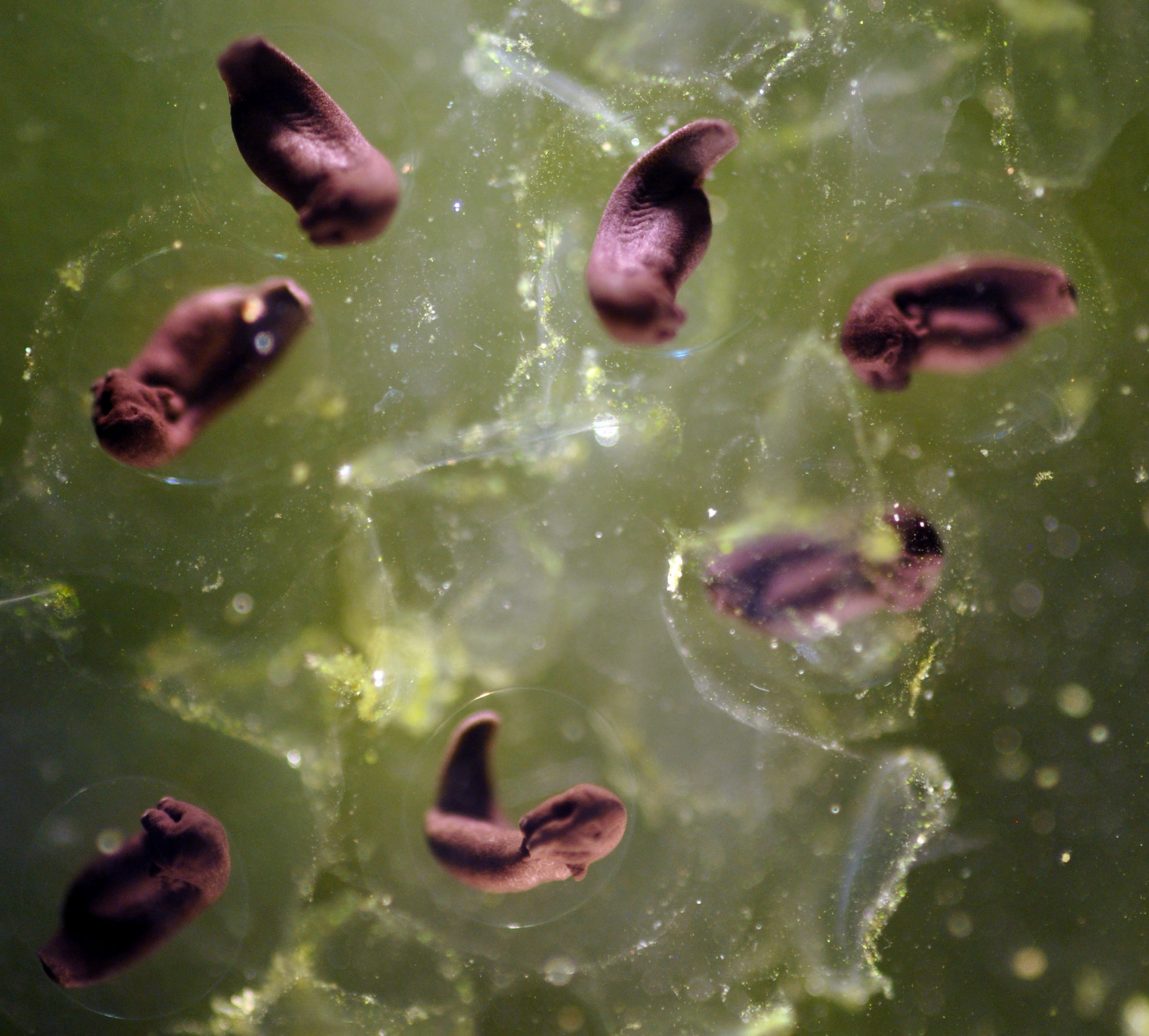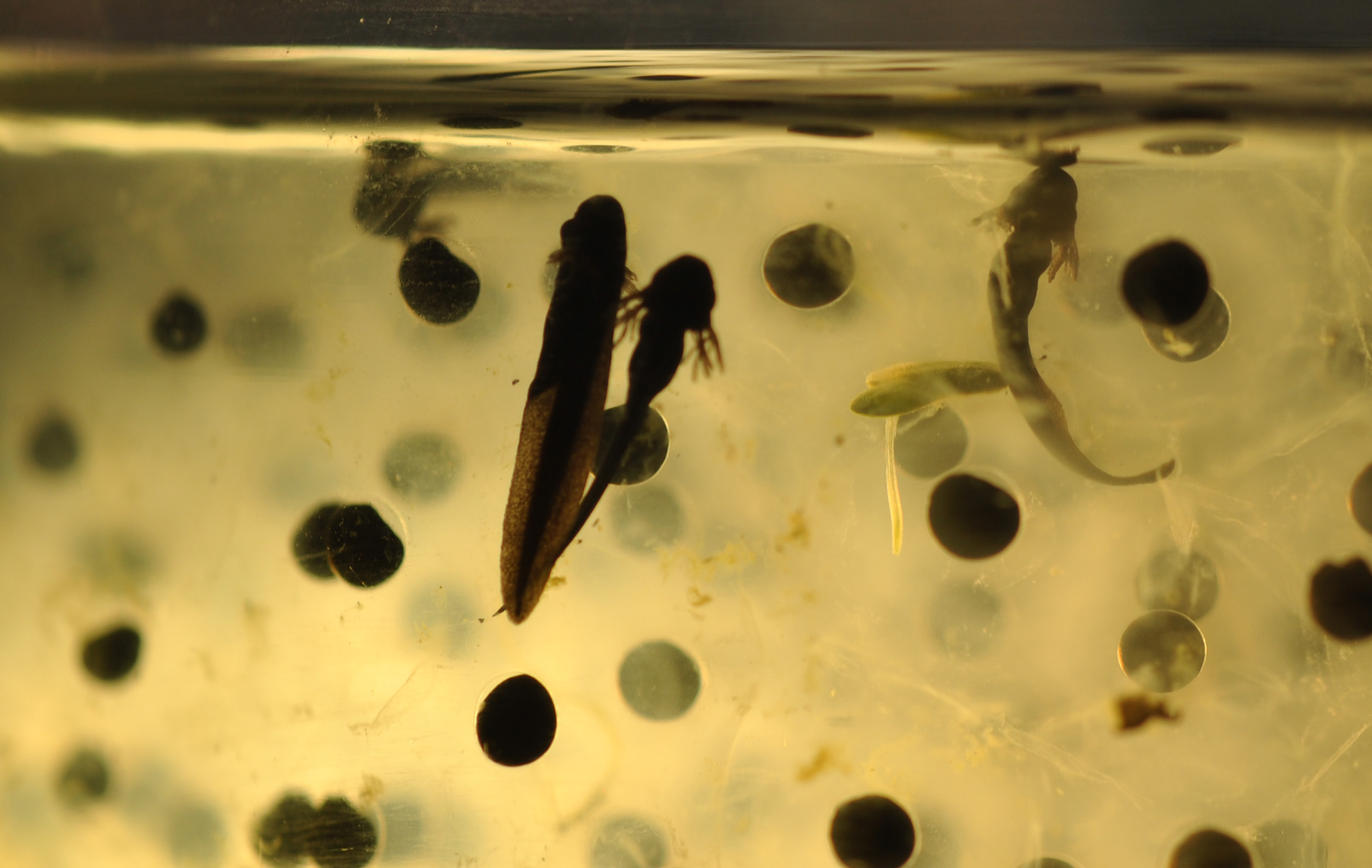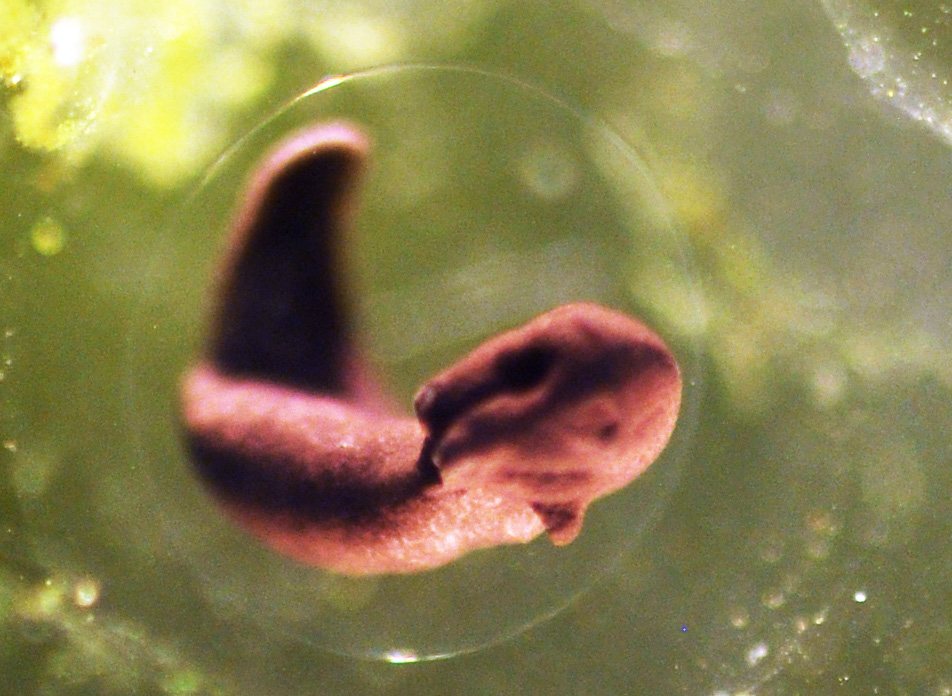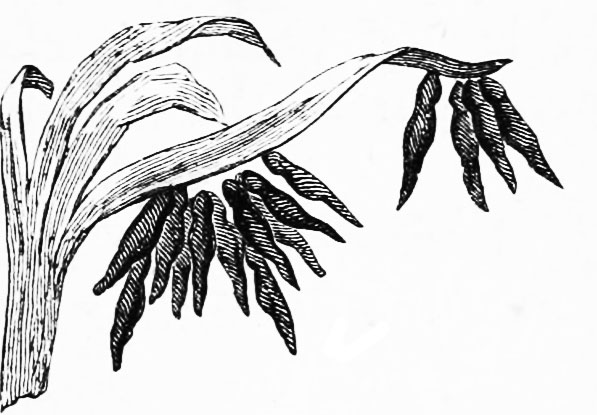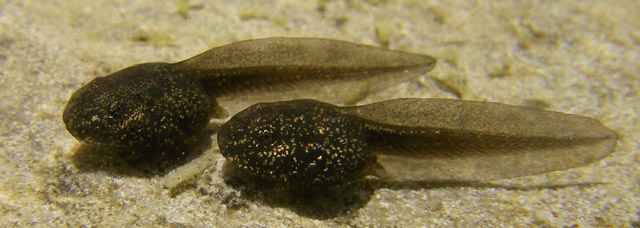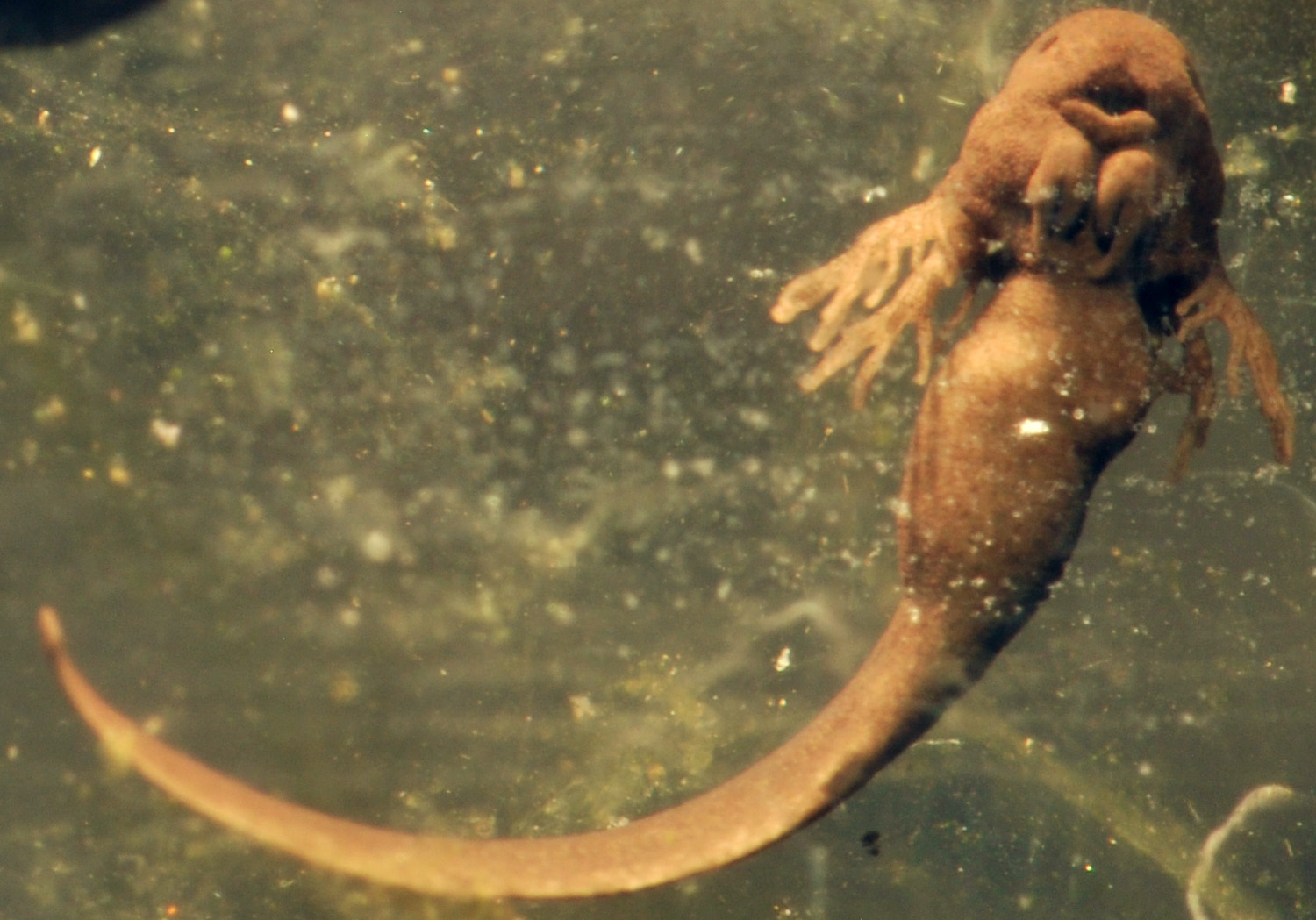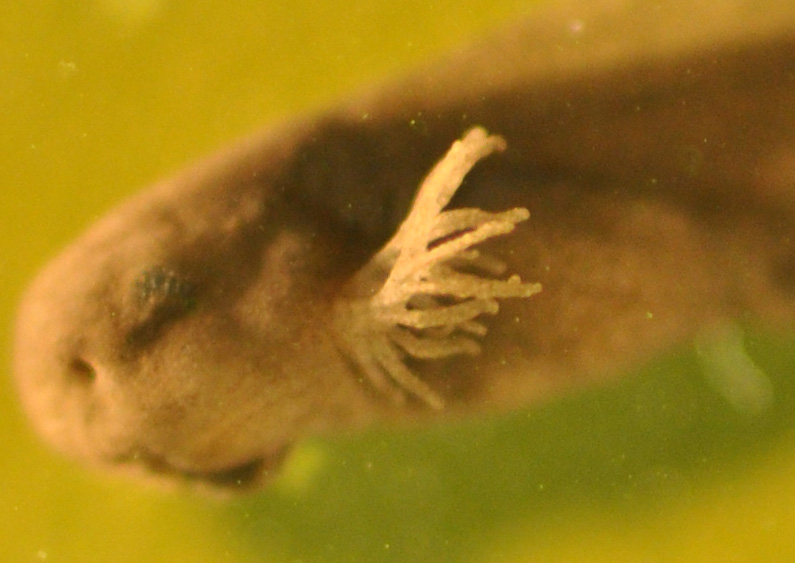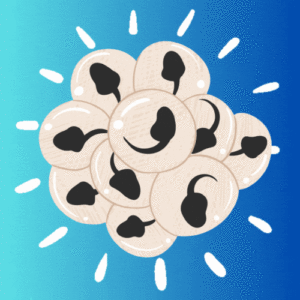
Here you’ll find photographs, videos and drawings of:
You can use these resources in reports, projects, tadpole diaries or anything you like! Please refer to the bottom of the page for information about attributing work.
Tadpoles in the Lab
Tadpoles are commonly used in laboratories to study brain development and function. They have much simpler nervous systems and display simpler behaviour compared to other animals, such as humans, monkeys, or even flies. Frog spawn is also laid in huge quantities making it more likely for a single cluster of eggs to contain several healthy tadpoles.
Tadpoles in the Wild
You will usually find tadpoles in ponds- they remain where they were laid as frog spawn until they metamorphose and can crawl to land.
Tadpole Anatomy
Tadpoles may be small, but these animals have specialised features that allow them to swim, eat and survive in the wild.


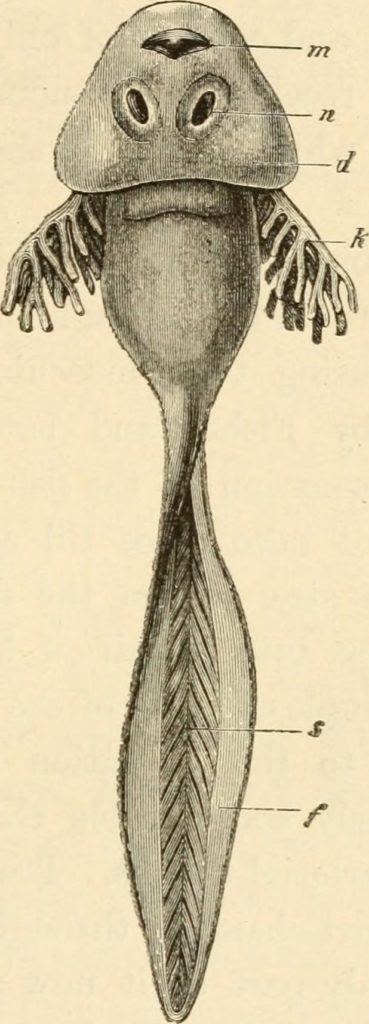
Look at the above anatomical drawings of young tadpoles. Can you spot any gills on the tadpoles in the photographs below?
During their development, tadpoles also begin to grow legs before they change into frogs. Watch the slo-mo video below, which shows how a tadpole swims after it has developed legs but has still retained its tail.
Remember to attribute photographs, videos or work where appropriate! This is not needed unless used online, but if you’re unsure please refer to the creative commons licence rules.

